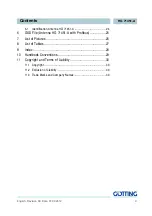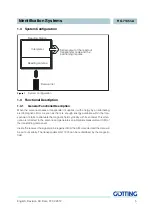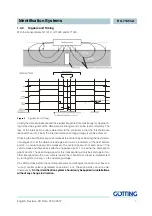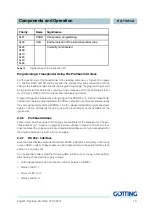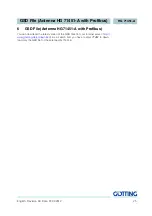
Mounting and Setup
English, Revision 03, Date: 07.02.2012
15
3
Mounting and Setup
3.1
Testing a Transponder
It is possible to test the transponders with a reading antenna and a connected PC
(q. v. section 4.2 on page 20).
3.2
Mounting Transponder
Range and Positioning accuracy will be influenced by
-
Metal parts lying on the ground (sheet metals)
-
Reinforcement laid close to the transponder
-
Induction loops, e.g. formed by structural steel
NOTE!
Individual metal rods have only little influence and may hurt the
metalfree area partially (see figure Figure 5 on page 16).
There is no influence on the positioning accuracy caused by
-
Environmental influences as snow, ice and water
-
Contaminations as oil, tar etc.
Basically the following Mounting Instructions for Transponder
G 71325 have to be observed
-
Keep a minimum distance of
500 mm
between the transponders.
-
Keep a minimum distance to the metal parts (see figure Figure 5 on page 16). The
interference on positioning accuracy and range depends on the size and the
range of the metal parts.
-
The minimum distance between conductors with a diameter smaller than 6 mm
has to be 2 mm.
Which end of the transponder is turned upwards is insignificant for the range or the
function.
3.2.1
Mounting in very solid Ground (e. g. concrete)
-
No additional protective casing necessary.
-
Vertical alignment required (otherwise a position error will be generated).
-
Transponder should be sealed (e.g. with a two component epoxy resin).
-
To protect the transponder use either a covering cap or apply an epoxy resin layer
(thickness approximately 1 cm). The drill hole should be wide enough so that the
cover cannot put pressure on the transponder.



